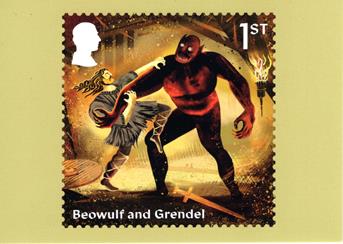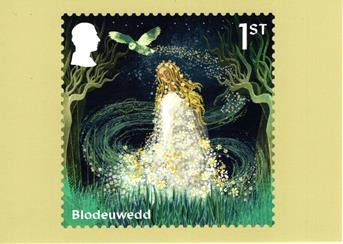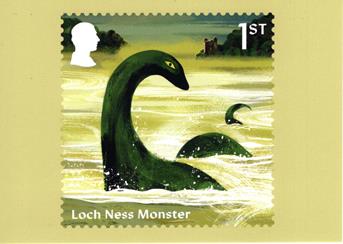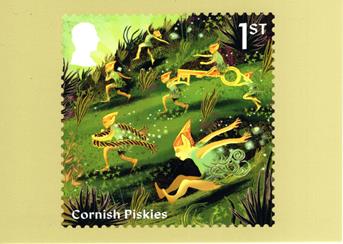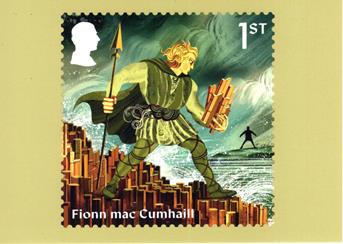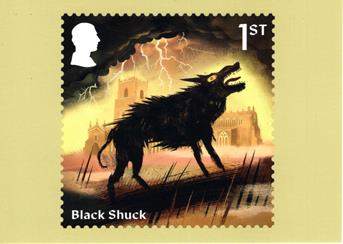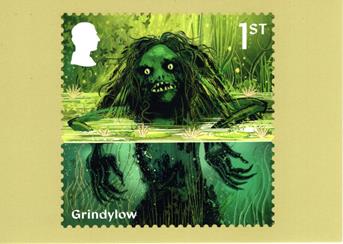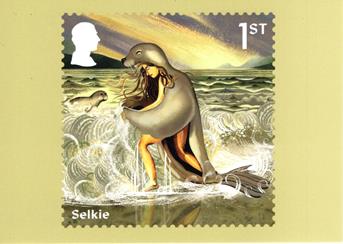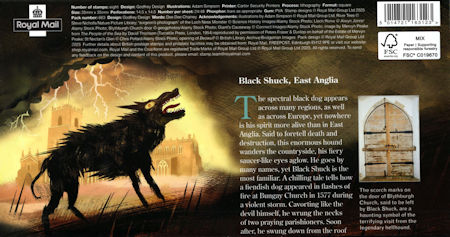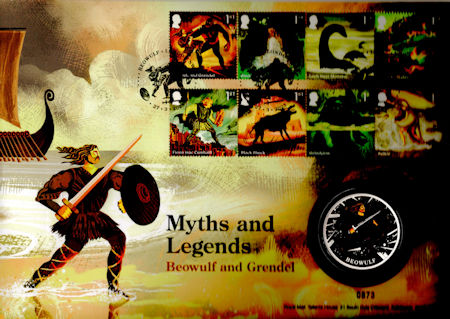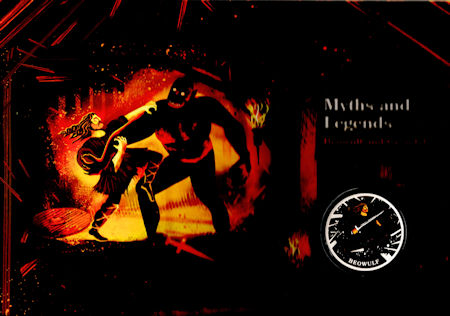Myths and Legends
2025 (March 27 2025)Commemorative
Designed by Godfrey Design
Size 35mm (h) x 35mm (v)
Printed by Cartor Security Print
Print Process Lithography
Perforations 14.5 x 14.5
Gum PVA
Stamps
Beowulf and Grendel, England
1stOne of the most important works of British literature, Beowulf is an Old English poem composed between the 8th and 11th centuries. At the centre of this hero tale is Beowulf, a Geatish warrior who travelled to Denmark to help rid King Hrothgar of the monstrous Grendel, who had been terrorising his mead hall.
Blodeuwedd, Wales
1stThe tragic tale of Blodeuwedd is found in the Fourth Branch of the Mabinogi, a collection of medieval Welsh stories. In the tale, Lleu Llaw Gyffes is cursed to never have a human wife. To foil this fate, magicians Math and Gwydion concoct a plan: they create Blodeuwedd from flowers. Yet, in a twist to the tale, Blodeuwedd falls in love with someone else.
Loch Ness Monster, Scotland
1stSightings of this legendary creature have a long history, with a Pictish carving supposedly depicting the flippered beast. A 7th-century text describes Saint Columba encountering a ‘water beast’ in the River Ness in AD 565. First, the beast killed a swimmer with a savage bite, later pursuing another man with a great roar. Invoking the name of God, Saint Columba banished the monster with the sign of the cross.
Cornish Piskies, Cornwall
1stThese sprightly fairy folk are small creatures, often wearing red pointed caps and clad in green rags, lichen or coats and breeches. Piskies love to play tricks on humans, and tales abound of their mischief, from stealing and hiding household items to knotting horses’ manes into fairy stirrups. Their common pastime is leading travellers astray by luring them off the path in the bogs and moorlands with their ‘pisky lights’.
Fionn mac Cumhaill, Northern Ireland
1stFionn’s heroic deeds were chronicled in the Fenian Cycle, one of four major cycles of Irish myths recorded in the 12th century. Renowned for his strength and wisdom, Fionn (also known as Finn MacCool) was the leader of the Fianna, a band of warriors who defended the land from harm. One tale explains how the Giant’s Causeway came into existence. Fionn boasted of his strength so loudly that his claims reached the Scottish giant Benandonner, who issued a challenge.
Black Shuck, East Anglia
1stThe spectral black dog appears across many regions, as well as across Europe, yet nowhere is his spirit more alive than in East Anglia. Said to foretell death and destruction, this enormous hound wanders the countryside, his fiery saucer-like eyes aglow. He goes by many names, yet Black Shuck is the most familiar.
Grindylow, Northeast England
1stLurking in the rivers, ponds and marshes of Lancashire and Yorkshire, grindylows are sprites with green skin and long arms, with sharp claws and teeth to match. Some of these water demons have garnered their own tales and earned their own fearsome identities, from Jinny or Jenny Greenteeth to Nelly Long-Arms and Peg O’Nell. Peg Powler, a water hag from the River Tees, is known for her green hair and unquenchable thirst for human life.
Selkies, Orkney and Shetland
1stThese elusive creatures take on animal form while in the sea, yet both male and female magically transform into human form when shedding their seal skins to come ashore. Some engage in illicit affairs with humankind, even residing on land for a time, though they can ultimately never resist the sea’s call.
Publicity - First
PHQ Cards
Pack PHQ544
RM Code AQ366
5014721163147
